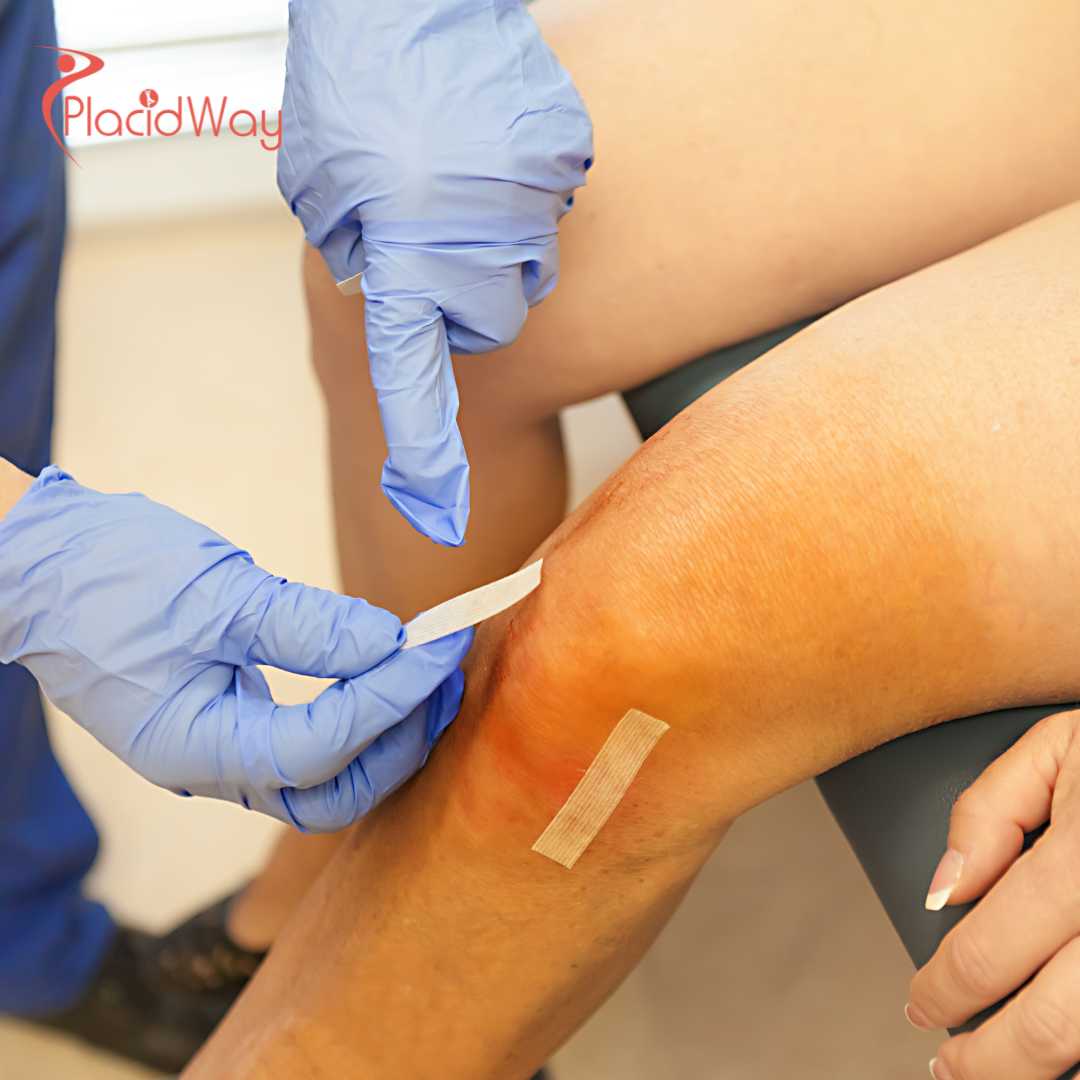
Understanding Pelvic Laparoscopy: Your Guide to Minimally Invasive Pelvic Health
Facing persistent pelvic pain, fertility challenges, or other unexplained gynecological issues can be a deeply unsettling experience. When diagnostic imaging or medication doesn't provide clear answers or sufficient relief, your doctor might recommend a pelvic laparoscopy. This sophisticated, minimally invasive surgical procedure has become a cornerstone in modern gynecological care, allowing specialists to see inside your pelvic cavity without requiring large incisions. It’s often used to diagnose conditions like endometriosis, ovarian cysts, fibroids, or even address certain fertility problems.
A pelvic laparoscopy, sometimes referred to as 'keyhole surgery' or 'band-aid surgery,' involves making a small incision, typically near the navel, through which a thin, lighted tube with a camera (a laparoscope) is inserted. This allows the surgeon to view the pelvic organs directly on a monitor. Beyond diagnosis, it can also be used for treatment, performing delicate surgical procedures with remarkable precision. For many, this translates to less pain, faster recovery, and minimal scarring compared to traditional open surgery.
If you're exploring options for this procedure, especially when considering care that might be more accessible or affordable, understanding pelvic laparoscopy fully is your first step. This guide aims to demystify the process, from recognizing symptoms and causes to navigating treatment options, recovery, and even the increasingly popular option of seeking quality care abroad through medical tourism.
What Symptoms Might Indicate the Need for a Pelvic Laparoscopy?
The decision to undergo a pelvic laparoscopy often arises when other diagnostic methods haven't fully explained persistent or severe symptoms. These symptoms can significantly impact daily life and well-being. Common indicators that might lead your doctor to suggest a laparoscopy include:
- Chronic Pelvic Pain: Pain in the lower abdomen or pelvis that lasts for six months or more, often dull or aching, and not responsive to standard treatments. This is a primary reason for many diagnostic laparoscopies.
- Unexplained Infertility: If a couple has been trying to conceive for an extended period without success, and initial tests are normal, laparoscopy can identify physical barriers like blocked fallopian tubes or endometriosis that hinder conception.
- Very Heavy or Painful Periods (Dysmenorrhea/Menorrhagia): While common, unusually severe pain or excessive bleeding during menstruation can be a sign of conditions like endometriosis or fibroids that might require surgical intervention.
- Painful Intercourse (Dyspareunia): Deep-seated pelvic pain during or after sexual activity can point to issues like endometriosis, pelvic adhesions, or ovarian cysts.
- Bladder or Bowel Dysfunction: Symptoms such as painful urination, frequent urges, or painful bowel movements, especially during menstruation, can sometimes be linked to pelvic conditions.
- Suspected Ectopic Pregnancy: In emergency situations, a laparoscopy may be performed to confirm and treat an ectopic pregnancy (where a fertilized egg implants outside the uterus).
If you're experiencing any of these symptoms, especially if they are persistent or worsening, it’s crucial to discuss them thoroughly with your healthcare provider to explore potential causes and appropriate diagnostic steps, including considering a "diagnostic laparoscopy for pelvic pain."
What Are the Common Causes and Risk Factors for Pelvic Conditions Requiring Laparoscopy?
Many conditions affecting the female reproductive organs and surrounding pelvic structures can lead to symptoms warranting a pelvic laparoscopy. Understanding these causes and risk factors can help in prevention and early detection:
- Endometriosis: This is a condition where tissue similar to the lining of the uterus grows outside the uterus, most commonly on the ovaries, fallopian tubes, and pelvic peritoneum. It causes chronic pain, heavy periods, and infertility. Risk factors include a family history, early onset of menstruation, and short menstrual cycles.
- Uterine Fibroids (Leiomyomas): These are non-cancerous growths of the uterus that can cause heavy bleeding, pelvic pressure, and pain. Risk factors include age (most common in women in their 30s and 40s), family history, and obesity.
- Ovarian Cysts: Fluid-filled sacs that develop on the ovaries are often harmless, but some can become large, painful, rupture, or twist (ovarian torsion), requiring surgical removal. Hormonal imbalances or certain medications can increase risk.
- Pelvic Inflammatory Disease (PID): An infection of the female reproductive organs, usually caused by sexually transmitted infections (STIs), can lead to scar tissue and adhesions, causing chronic pain and infertility. Untreated STIs are the primary risk factor.
- Pelvic Adhesions: Bands of scar tissue that can form between organs in the pelvis, often as a result of previous surgery, infection, or endometriosis. They can cause chronic pain and infertility by binding organs together.
- Ectopic Pregnancy: Occurs when a fertilized egg implants outside the uterus, most commonly in a fallopian tube. Risk factors include previous ectopic pregnancy, PID, and fertility treatments.
- Certain Cancers: Although less common, laparoscopy can be used to stage or diagnose certain gynecological cancers.
Knowing these common culprits helps patients and doctors alike understand why a "laparoscopy for pelvic pain diagnosis" or "laparoscopy for infertility causes" might be the best next step.
What Types of Pelvic Conditions Can a Laparoscopy Diagnose and Treat?
The versatility of pelvic laparoscopy lies in its dual capability: it serves as both a powerful diagnostic tool and an effective surgical method. Here's how it's used:
Diagnostic Pelvic Laparoscopy:
When less invasive tests like ultrasound, MRI, or blood work haven't provided a definitive answer, a diagnostic laparoscopy offers a direct visual inspection. It helps confirm or rule out conditions such as:
- Endometriosis: The surgeon can identify and stage endometrial implants.
- Pelvic Adhesions: Scar tissue binding organs can be clearly seen.
- Ovarian Cysts or Tumors: Their nature and size can be assessed.
- Pelvic Inflammatory Disease (PID): Signs of infection and damage can be observed.
- Causes of Infertility: Blocked fallopian tubes or other structural issues.
- Ectopic Pregnancy: Confirmation of implantation outside the uterus.
- Chronic Pelvic Pain: Identifying the source of unexplained pain.
Therapeutic Pelvic Laparoscopy:
Once a diagnosis is made, or in cases where the condition is already known, the surgeon can often proceed immediately with treatment during the same procedure, avoiding a second surgery. Common therapeutic laparoscopic procedures include:
- Excision or Ablation of Endometriosis: Removing or destroying endometrial implants to alleviate pain and improve fertility.
- Ovarian Cystectomy: Removing cysts while preserving healthy ovarian tissue.
- Myomectomy: Removing uterine fibroids, often preserving the uterus for future fertility.
- Adhesionolysis: Cutting and removing pelvic adhesions to relieve pain and improve organ function.
- Treatment of Ectopic Pregnancy: Removing the ectopic pregnancy from the fallopian tube.
- Tubal Ligation: A permanent birth control method.
- Hysterectomy (Laparoscopic): In some cases, the entire uterus can be removed laparoscopically.
This "minimally invasive pelvic surgery" approach allows for complex procedures with smaller incisions, typically leading to faster recovery times and less postoperative discomfort.
Who is an Ideal Candidate for Pelvic Laparoscopy?
Determining if you are a suitable candidate for a pelvic laparoscopy involves a thorough evaluation by your doctor. Generally, ideal candidates share some common characteristics:
- Persistent or Chronic Pelvic Pain: If you've been experiencing pelvic pain for an extended period, and non-surgical treatments or less invasive diagnostic methods haven't identified the cause or provided relief, laparoscopy might be recommended.
- Unexplained Infertility: For couples struggling to conceive where initial fertility tests (like semen analysis, hormone tests, and hysterosalpingography) are normal, a laparoscopy can uncover physical blockages or conditions like mild endometriosis that might be hindering conception. Many search for "laparoscopy for fertility treatment."
- Suspected Pelvic Conditions: If imaging scans (ultrasound, MRI) suggest conditions like ovarian cysts, fibroids, or endometriosis, but a definitive diagnosis or treatment requires direct visualization or surgical removal.
- History of Ectopic Pregnancy: Women with suspected ectopic pregnancies often require immediate laparoscopic intervention for diagnosis and treatment.
- Seeking Minimally Invasive Options: For conditions that historically required open surgery (like hysterectomy or fibroid removal), candidates preferring less invasive approaches with shorter recovery times are often ideal for laparoscopic versions.
- Overall Good Health: Patients generally need to be in good enough health to undergo general anesthesia and tolerate surgery. Pre-operative assessments will confirm this.
However, laparoscopy may not be suitable for everyone. Factors like severe obesity, extensive previous abdominal surgeries with anticipated dense adhesions, or certain heart or lung conditions might increase risks. Your surgeon will discuss your specific medical history and individual circumstances to determine if "pelvic laparoscopy" is the right option for you.
What Does Recovery After Pelvic Laparoscopy Typically Involve?
One of the significant advantages of laparoscopic surgery is its generally quicker and less painful recovery compared to traditional open surgery. However, it's still a surgical procedure, and understanding what to expect is key to a smooth recovery:
- Immediate Post-Op (First 24-48 hours):
- Pain Management: You'll likely experience some discomfort at the incision sites and potentially shoulder pain (due to gas used to inflate the abdomen during surgery, irritating the diaphragm). Pain medication will be prescribed.
- Nausea: Some people experience mild nausea from anesthesia.
- Activity: You'll be encouraged to get up and walk around a bit to help dissipate the gas and prevent blood clots. Most patients go home the same day or the next.
- First Week:
- Rest: It's crucial to rest. Avoid heavy lifting (anything over 10-15 lbs), strenuous exercise, and prolonged standing.
- Incisions: Keep incision sites clean and dry. They are usually covered with small dressings or surgical glue. Minor bruising or swelling is normal.
- Diet: Start with light, easily digestible foods.
- Return to Work: Many people can return to light desk work within 3-7 days, depending on their job and how they feel. Physical jobs require more time off.
- Weeks 2-4:
- Gradual Activity Increase: You can slowly reintroduce more activities, but continue to avoid heavy lifting or high-impact exercise until cleared by your doctor.
- Driving: You can typically resume driving when you are no longer taking strong pain medications and can comfortably make emergency stops (often around 1 week).
- Sexual Activity: Your doctor will advise when it's safe to resume sexual activity, usually after 2-4 weeks to allow internal tissues to heal.
- Full Recovery: While external incisions heal quickly, internal healing takes longer. Most people feel fully recovered within 2-4 weeks, but it can sometimes extend to 6 weeks for more complex procedures.
Always follow your surgeon's specific post-operative instructions carefully, and don't hesitate to contact them if you have concerns about "laparoscopy recovery time" or any unusual symptoms.
What Are the Potential Risks and Side Effects of Pelvic Laparoscopy?
Like any surgical procedure, pelvic laparoscopy carries some potential risks and side effects, though serious complications are rare. It's important to discuss these with your surgeon before the procedure:
- General Anesthesia Risks: These include nausea, vomiting, sore throat, and, very rarely, more serious issues like allergic reactions, breathing problems, or heart complications.
- Bleeding: Minor bleeding at the incision sites is common, but significant internal bleeding requiring a blood transfusion or further surgery is rare.
- Infection: Infection can occur at the incision sites or internally. Symptoms include redness, swelling, pus, fever, or increased pain. Antibiotics can usually treat infections.
- Injury to Internal Organs: Though uncommon, there is a small risk of accidental damage to nearby organs such as the bowel, bladder, or blood vessels during the insertion of instruments. This might require additional surgery to repair.
- Nerve Damage: Rarely, nerves in the pelvis or leg can be affected, leading to temporary or permanent numbness or weakness.
- Hernia: A small risk of developing a hernia at the incision site exists, especially if the incision is not properly closed or if there's undue strain during recovery.
- Blood Clots: As with any surgery, there's a risk of developing deep vein thrombosis (DVT) in the legs, which can potentially travel to the lungs (pulmonary embolism). Early mobilization after surgery helps minimize this risk.
- Shoulder Pain: This common side effect is caused by the carbon dioxide gas used to inflate the abdomen irritating the diaphragm, which shares nerve pathways with the shoulder. It typically resolves within a day or two.
- Scarring: While incisions are small, they will result in small scars.
Your surgical team will take extensive precautions to minimize these risks. Choosing an experienced surgeon and a reputable facility, whether locally or abroad, is crucial to ensuring patient safety.
How Do Pelvic Laparoscopy Costs Compare Globally?
One of the most compelling reasons individuals consider medical tourism for procedures like pelvic laparoscopy is the significant cost difference. Healthcare costs in countries like the United States, Canada, and the United Kingdom can be prohibitively high, especially for elective or non-urgent procedures not fully covered by insurance. Here's a general comparison:
| Country | Estimated Cost Range (USD) | Notes |
|---|---|---|
| USA | $8,000 - $25,000+ | Highly variable based on state, facility, and specific procedure. Can be much higher for complex cases. |
| UK | $7,000 - $15,000+ (private) | NHS covers some cases, but private care is costly with potential wait times. |
| Canada | $6,000 - $12,000+ (private) | Public system covers essentials, but private options or procedures for non-residents are expensive. |
| Mexico | $3,000 - $7,000 | Popular for proximity to US, high-quality private hospitals, and board-certified surgeons. |
| India | $2,500 - $6,000 | Known for advanced medical facilities, highly skilled doctors, and comprehensive packages. |
| Thailand | $3,500 - $8,000 | Excellent hospitals, experienced staff, and often includes recovery in a resort-like setting. |
| Turkey | $4,000 - $9,000 | Emerging medical tourism hub with modern facilities, competitive pricing, and European standards. |
These figures are estimates and can vary based on the complexity of the procedure (diagnostic vs. therapeutic, type of condition treated), the hospital's prestige, the surgeon's experience, and the length of hospital stay. Often, "laparoscopy cost abroad" packages include hospital fees, surgeon's fees, anesthesia, and sometimes even initial consultation and post-operative follow-ups.
Why Should You Consider Pelvic Laparoscopy Abroad for Your Treatment?
For many individuals, seeking medical care beyond their home borders, particularly for specialized procedures like pelvic laparoscopy, has become an appealing and practical option. Here's why:
- Significant Cost Savings: As seen in the cost comparison, the same high-quality procedure can be dramatically more affordable in countries known for medical tourism. This can be a lifesaver for those without adequate insurance or facing high deductibles.
- Shorter Wait Times: In countries with universal healthcare systems, long waiting lists for non-emergency surgeries can cause prolonged discomfort and anxiety. Traveling abroad can provide immediate access to necessary treatment.
- Access to Specialized Expertise: Some international clinics and surgeons specialize in particular laparoscopic techniques (e.g., advanced endometriosis excision or fertility-preserving surgeries) and have extensive experience with specific conditions, offering a level of expertise not always readily available at home.
- Advanced Technology and Facilities: Many medical tourism destinations boast state-of-the-art hospitals with cutting-edge equipment, often newer and more advanced than some facilities in Western countries.
- Privacy and Discretion: For some, the opportunity to undergo a medical procedure away from home offers a heightened sense of privacy during a sensitive time.
- Combining Treatment with Travel: The prospect of recovering in a pleasant, often resort-like environment, or combining treatment with a vacation for family members, can be an added benefit, making the overall experience less clinical.
- Comprehensive Care Packages: Many international hospitals and medical tourism facilitators offer all-inclusive packages that cover not just the surgery, but also accommodation, transfers, and post-operative care, simplifying the logistical burden.
Ultimately, the decision to seek a "laparoscopy overseas" is a personal one, driven by a combination of financial, logistical, and medical considerations. It’s about finding the best care solution that fits your needs and budget.
Which Countries Offer the Best Value and Quality for Pelvic Laparoscopy?
Several countries have established themselves as leaders in medical tourism, offering a compelling combination of high-quality care, experienced medical professionals, and affordable pricing for procedures like pelvic laparoscopy. Here are a few prominent destinations:
- Mexico:
- Why: Proximity to the US, highly trained bilingual surgeons (many US-board certified), JCI-accredited hospitals, and state-of-the-art facilities.
- Value: Offers costs typically 50-70% lower than in the US, making it a prime choice for "affordable pelvic laparoscopy."
- India:
- Why: A global medical tourism powerhouse with world-class hospitals, exceptionally skilled doctors (often trained in the West), and advanced technology.
- Value: Among the most affordable options, with costs often 70-80% less than Western prices, without compromising on quality. Comprehensive packages are common.
- Thailand:
- Why: Renowned for its luxurious private hospitals, excellent patient care, and warm hospitality. Many hospitals are JCI-accredited.
- Value: Competitive pricing, often 50-70% less than Western countries, coupled with an appealing recovery environment.
- Turkey:
- Why: An emerging hub with modern infrastructure, highly qualified medical personnel, and a strategic location bridging Europe and Asia. Many facilities meet international standards.
- Value: Offers significant savings, typically 40-60% below European and North American costs, while providing high-quality care.
- South Korea:
- Why: Known for technological innovation, highly specialized surgeons, and efficient healthcare systems. Excellent for complex cases.
- Value: While slightly higher than other Asian destinations, still considerably more affordable than Western prices, especially for advanced procedures.
When selecting a destination, research specific clinics and surgeons, look for international accreditations (like JCI), and read patient testimonials to ensure you are choosing a provider that meets your standards for "safe laparoscopic surgery abroad."
What Should You Expect When Traveling Internationally for Pelvic Laparoscopy?
Undertaking a medical journey abroad for a pelvic laparoscopy requires careful planning and coordination. Here’s a general roadmap of what you can expect, often facilitated by a medical tourism company like PlacidWay:
- Initial Consultation & Medical Records Review:
- You’ll start by sharing your medical history, diagnostic reports (ultrasounds, MRIs), and current symptoms with the international medical provider.
- This is often done remotely via teleconsultation, allowing the foreign surgeon to assess your case and confirm if a pelvic laparoscopy is appropriate.
- Treatment Plan & Quote:
- Based on your records, the hospital will provide a detailed treatment plan, including the specific type of laparoscopy, estimated duration of stay, and an all-inclusive cost quote.
- This is where you can compare "pelvic laparoscopy packages" and understand what's covered.
- Travel Logistics & Booking:
- Once you confirm, you’ll work on travel arrangements: flights, accommodation (often organized by the medical tourism facilitator or hospital), and any necessary visas.
- Ensure you factor in enough time for pre-operative tests, the procedure, and an adequate recovery period before flying home.
- Arrival & Pre-Operative Assessments:
- Upon arrival, you’ll typically have an in-person consultation with your surgeon and undertake any final pre-operative tests (blood work, EKG, etc.) to ensure you are fit for surgery.
- This is a good time to ask any remaining questions.
- The Procedure & Hospital Stay:
- You'll undergo the pelvic laparoscopy as planned. The typical hospital stay for a laparoscopic procedure is 1-2 days.
- The medical team will provide comprehensive post-operative care and pain management.
- Recovery Period in Destination:
- After discharge, you'll need to stay in the destination for a recommended recovery period (often 1-2 weeks) before it's safe to fly home. This allows for initial healing and follow-up checks.
- This phase is critical for ensuring good recovery and monitoring for any immediate complications.
- Return Home & Follow-up:
- Your foreign medical team will provide detailed instructions for at-home care and any necessary medications.
- Coordination for post-operative follow-up with your local doctor will be arranged, often with reports and images provided by the international hospital.
Using a reputable medical tourism facilitator like PlacidWay can streamline this entire process, offering support from initial inquiry to post-recovery care, helping you manage the complexities of "traveling for medical treatment."
Take the Next Step with PlacidWay
Ready to explore treatment options abroad? Discover top clinics, compare prices, and get a free quote tailored to your needs with PlacidWay.
Cheap Gyn Surgical Procedures Packages










Share this listing